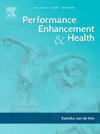禁药:使用合成插图来描绘橄榄球运动员违反反兴奋剂规则的经历
IF 3.7
Q2 HOSPITALITY, LEISURE, SPORT & TOURISM
引用次数: 0
摘要
目的:了解因违反反兴奋剂规则而被处罚的运动员的生活经历,为倾听和学习提供了机会。然而,在考虑在体育运动中使用兴奋剂时,学术界很少听取那些受影响者的声音。我们的目的是阐明被制裁运动员经历的重要方面,并强调预防和康复的机会。设计:采用半结构化访谈研究设计,数据为复合小插图的发展提供信息,这是一种创造性的非小说形式。方法:对橄榄球联盟(n = 1)和橄榄球联盟(n = 1)内因违反反兴奋剂规则而被处罚的两名优秀橄榄球运动员进行半结构化访谈。创建三个复合小插曲,说明球员在违反规则之前,期间和之后的经历。研究发现:这些小插曲用参与者自己的话强调了运动需求和药物使用的多重影响:(1)导致违规:“你只是在踩水,你还活着”(2)“橄榄球运动中存在着巨大的社会压力,不仅是在比赛上,而且在你应该成为的人身上”(3)“就像被火车撞了一样”。ADRV的后果。结论:社会认同在橄榄球运动员重大事件(如重伤)后的转变过程中所起的作用是影响运动员服用兴奋剂的关键因素。除了解决这项运动的需求外,对于经历重大事件(如受伤)和过渡的运动员,显然需要早期干预和基于证据的支持,以防止兴奋剂违规。本文章由计算机程序翻译,如有差异,请以英文原文为准。
Banned for doping: Using composite vignettes to portray rugby players’ experiences of anti-doping rule violations
Objective: Understanding the lived experiences of athletes who have been sanctioned for violating anti-doping rules presents the opportunity to listen and learn. Yet, the academic field seldom draws on the voices of those affected when considering doping in sport. Our aim was to illuminate important aspects of sanctioned athletes’ experiences and highlight opportunities for prevention and rehabilitation. Design: A semi-structured interview research design was used, and data informed the development of composite vignettes, a form of creative non-fiction. Method: Semi-structured interviews were conducted with two elite rugby players sanctioned for violating the anti-doping rules within rugby league (n = 1) and rugby union (n = 1). Three composite vignettes were created illuminating player experiences before, during and after the violations. Findings: The vignettes highlight in participants’ own words the multiple impacts of sport demands and drug use: (1) Leading up to the violation: ‘You're just treading water, you're surviving’ (2) ‘There's just this massive amount of social pressure in rugby, not just on the game, but on who you're supposed to be’ (3) ‘It was like being hit by a train’. The ADRV aftermath. Conclusions: The role of social identity in the transitions experienced by a rugby player following a critical incident (e.g., serious injury) was a key influencing factor for doping. Alongside addressing the demands of the sport, the need for early intervention and evidence-based support for players experiencing critical incidents (e.g., injury) and transitions was evident to prevent doping violations.
求助全文
通过发布文献求助,成功后即可免费获取论文全文。
去求助
来源期刊

Performance enhancement and health
Social Sciences-Health (social science)
CiteScore
4.70
自引率
0.00%
发文量
27
审稿时长
57 days
 求助内容:
求助内容: 应助结果提醒方式:
应助结果提醒方式:


